In this documentary, we delve deep into the multifaceted identity of Brahmins, challenging prevailing narratives surrounding caste discrimination in Bharat. By examining historical references and personal stories, we aim to present a balanced view that highlights both the struggles and responsibilities of the Brahmin community.
Table of Contents
- Introduction to Caste-Based Discrimination
- The Reverence of Nandanar
- Dr. Ambedkar’s Acknowledgment of Nandanar
- Who is a Brahmin? Defining the Term
- Exploring Adharma Vedam
- Insights from Vajrasuchi Upanishad
- The Story of Satyakama Javali
- The Controversial Case of Ekalavya
- Introspection: Comparing Ekalavya and Satyakama’s Stories
- The Fluidity of the Chaturvarna System
- Conclusion: The Duality of Brahmin Identity
- FAQ
Introduction to Caste-Based Discrimination
Caste-based discrimination is a deep-rooted issue in Bharat, woven intricately into the social fabric of the nation. The impact of this discrimination is pervasive, influencing various aspects of life, from education to employment opportunities. This systemic inequality is not merely a historical artifact; it continues to shape the experiences of millions today.
Understanding this issue requires a nuanced examination of its origins and manifestations. The caste system, traditionally divided into four main categories—Brahmins, Kshatriyas, Vaishyas, and Shudras—has evolved over centuries, often leading to the marginalization of lower castes. This discrimination is not just a relic of the past but a present reality that demands attention.
The Two Opposing Narratives
In the discourse surrounding caste, two prominent narratives often emerge. On one hand, there is the narrative of the oppressed Sudras, who view Brahmins as the architects of their suffering and social exclusion. This perspective highlights the historical injustices faced by lower castes, attributing the roots of caste discrimination to the actions and privileges of Brahmins.
Conversely, there exists a counter-narrative that suggests Brahmins themselves have faced discrimination, particularly during periods of foreign invasion and colonization. This view posits that Brahmins have been victims of socio-political shifts, including the modern reservation system, which aims to uplift marginalized communities but is perceived by some as a form of reverse discrimination.
These conflicting narratives create a complex and often contentious dialogue, making it challenging to arrive at a singular truth. Each side pulls the narrative toward its cause, complicating the understanding of caste dynamics in Bharat.
The Perspective of Shiva
Adopting the perspective of Shiva—an embodiment of equanimity—allows for a more balanced examination of the caste system. Shiva’s inclusive vision treats all beings with equal respect, transcending social hierarchies. This approach invites us to explore the issue of caste discrimination without bias, fostering understanding rather than division.
Shiva’s perspective serves as a reminder that all individuals, regardless of caste, are deserving of dignity and respect. Embracing this viewpoint can pave the way for more constructive dialogues about caste and discrimination, promoting unity rather than conflict.
Who is the Target Audience?
This exploration is not intended for everyone; it is designed for those willing to engage deeply with the complexities of caste. The audience comprises individuals who seek to understand the historical and contemporary implications of caste discrimination. It is for those who are prepared to look beyond surface-level narratives and confront uncomfortable truths.
To determine if you belong to this audience, consider your willingness to explore the legends and histories that shape the caste system. Are you ready to challenge your perceptions and engage with the realities faced by various communities? If so, you may find value in this discourse.
The Legend of Nandanar
The story of Nandanar, an ardent devotee of Shiva from ancient Tamil Nadu, offers a poignant illustration of caste discrimination’s impact. Despite his devotion, Nandanar was deemed untouchable, barred from entering the temple to seek darshan of Shiva. His story underscores the harsh realities faced by those in lower castes, revealing how societal norms dictated access to spiritual spaces.
In his quest for divine connection, Nandanar’s perseverance led to a miraculous moment where Shiva, recognizing his devotion, instructed Nandi to move aside, allowing Nandanar to see him. This legend, rooted in compassion and divine intervention, highlights the deep-seated biases of the time while also illustrating the power of faith and devotion.
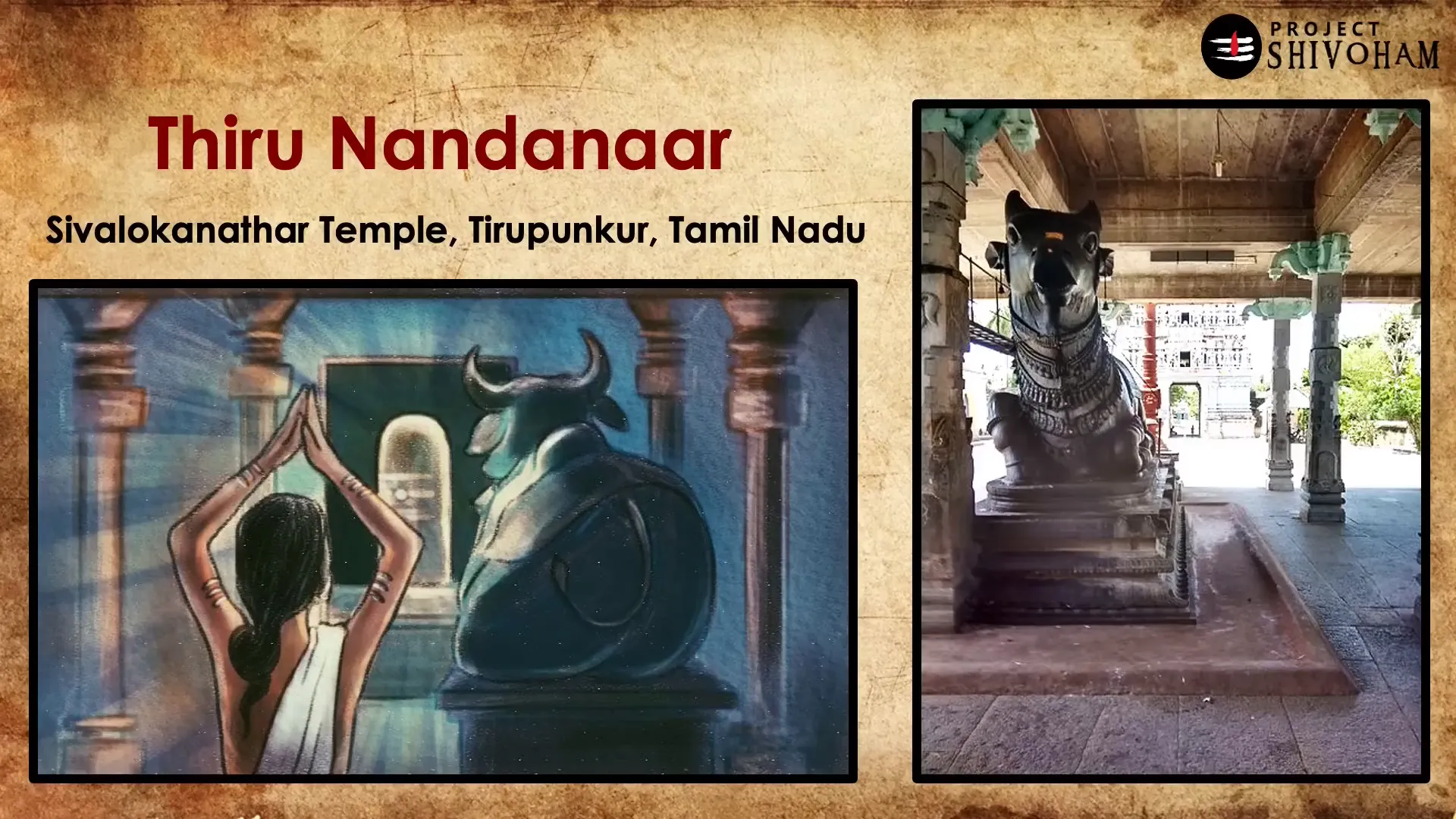
Historical Context of Varna Discrimination
The roots of varna discrimination can be traced back to ancient texts and societal structures that established rigid hierarchies. The concept of varna was initially intended to categorize individuals based on their duties and responsibilities. However, over time, it transformed into a system of social stratification that marginalized entire communities.
Historical evidence indicates that varna discrimination existed long before the arrival of foreign powers in Bharat. The practices of exclusion and segregation were embedded in the social psyche, leading to systemic inequalities that persist today. Understanding this historical context is crucial for addressing the contemporary manifestations of caste discrimination.
The evolution of the caste system has been marked by various socio-political influences, including colonialism and reform movements. These forces have shaped the current landscape of caste relations, complicating efforts to achieve social equity. Analyzing this historical trajectory sheds light on the ongoing struggles faced by marginalized communities in Bharat.
The Reverence of Nandanar
Nandanar’s legacy is a testament to the transformative power of devotion. Fourteen hundred years ago, he faced the harsh reality of being barred from temples due to his caste. Yet, his unwavering faith in Shiva led to divine recognition and acceptance. Over time, society began to acknowledge his devotion, ultimately elevating him to the status of one of the revered sixty-three Nayanars in Tamil Shaivite tradition.
The Shift in Perception
This shift wasn’t instantaneous; it was a gradual realization among the people of his time. Initially viewed through the lens of caste, Nandanar’s true essence as a devotee was finally recognized. The same Brahmins who once excluded him began to honor him in temples across Tamil Nadu. This evolution underscores a crucial lesson: society is capable of acknowledging its past mistakes and embracing change.
Dr. Ambedkar’s Acknowledgment of Nandanar
Dr. B.R. Ambedkar, a pivotal figure in advocating for the rights of the oppressed, dedicated his work, “The Untouchables,” to Nandanar. This dedication signifies the profound impact Nandanar’s story has had on discussions surrounding caste and discrimination. Ambedkar’s respect for Nandanar highlights the importance of recognizing historical figures who represented resilience in the face of adversity.
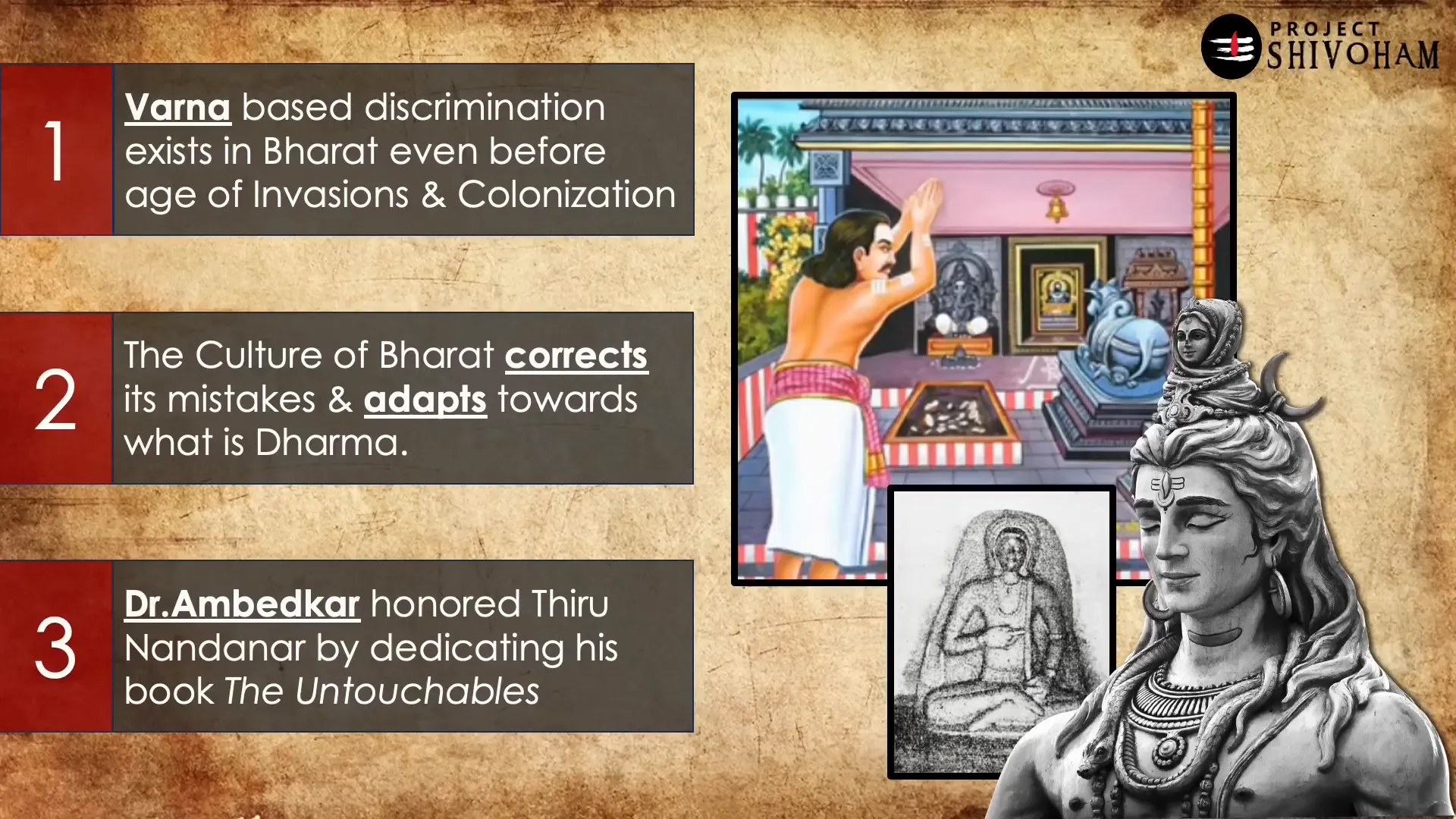
The Significance of Nandanar’s Legacy
By dedicating his work to Nandanar, Ambedkar not only acknowledged the struggles of the untouchables but also illustrated how devotion transcends caste barriers. Nandanar’s story serves as a powerful reminder of the ongoing fight against discrimination, inspiring future generations to challenge societal norms and strive for equality.
Who is a Brahmin? Defining the Term
The term “Brahmin” often carries significant weight in discussions about caste. Traditionally, Brahmins are seen as the priestly class, responsible for spiritual leadership and rituals. However, understanding who a Brahmin truly is requires delving deeper than mere labels.
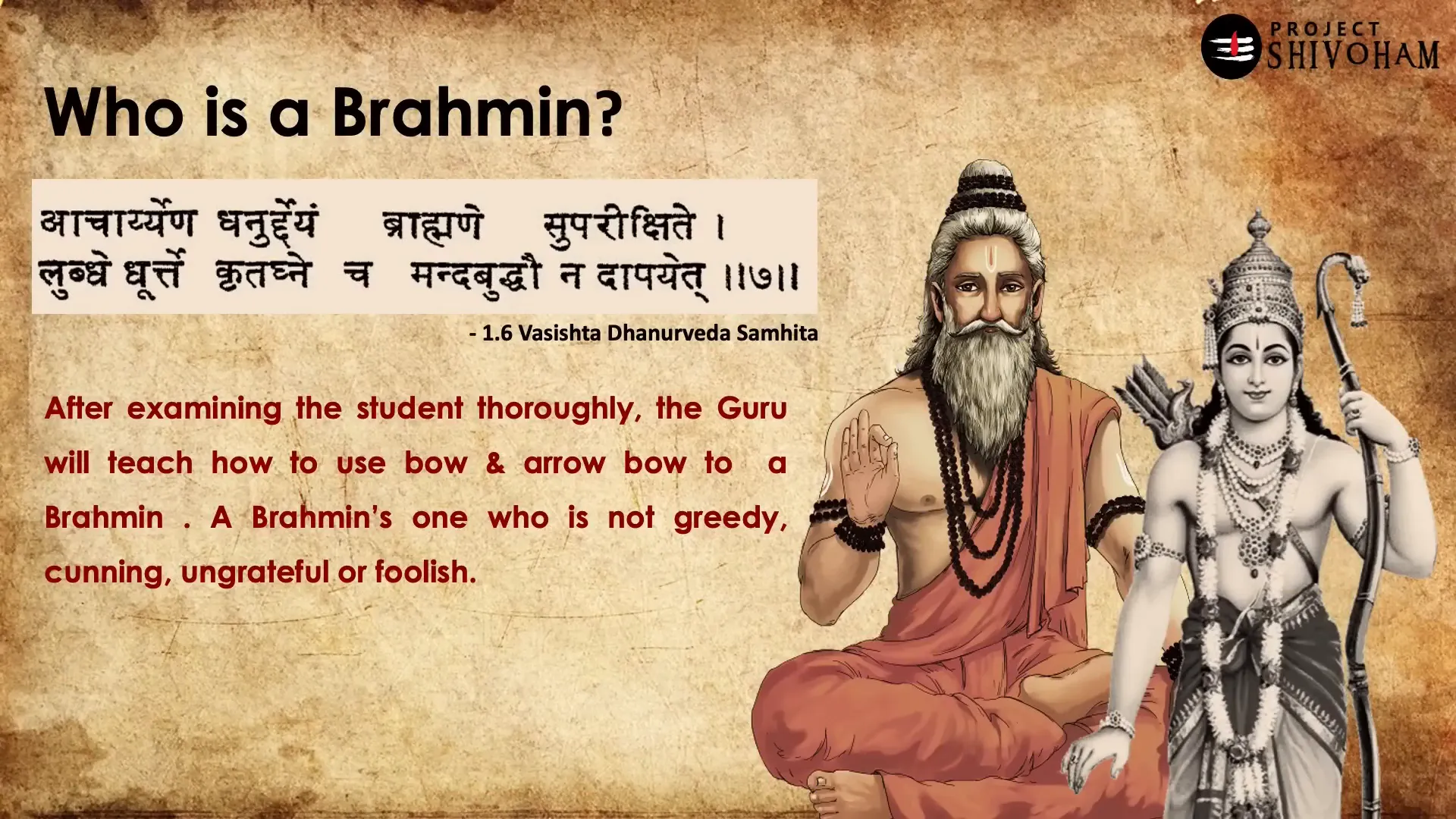
Characteristics of a Brahmin
According to ancient texts, particularly the Dhanurvedam, a Brahmin is defined not by birth but by qualities. A true Brahmin embodies virtues such as humility, wisdom, and integrity. These characteristics challenge the notion that caste is solely determined by lineage.
Exploring Adharma Vedam
Adharma Vedam provides profound insights into societal structures. It highlights that all beings, irrespective of their varna, originate from the same source—Brahman, the supreme being. This concept fosters a sense of unity among all people, transcending caste distinctions.
Equanimity in Society
The essence of Adharma Vedam emphasizes that societal roles should not dictate worth. It challenges the rigid hierarchies established over time, advocating for a more inclusive understanding of humanity. By recognizing that all individuals stem from the same divine source, we can foster greater acceptance and understanding.
Insights from Vajrasuchi Upanishad
The Vajrasuchi Upanishad, attributed to Adi Shankaracharya, delves into the essence of what it means to be a Brahmin. It poses critical questions about identity and virtue, urging us to reconsider traditional definitions based on birth alone.
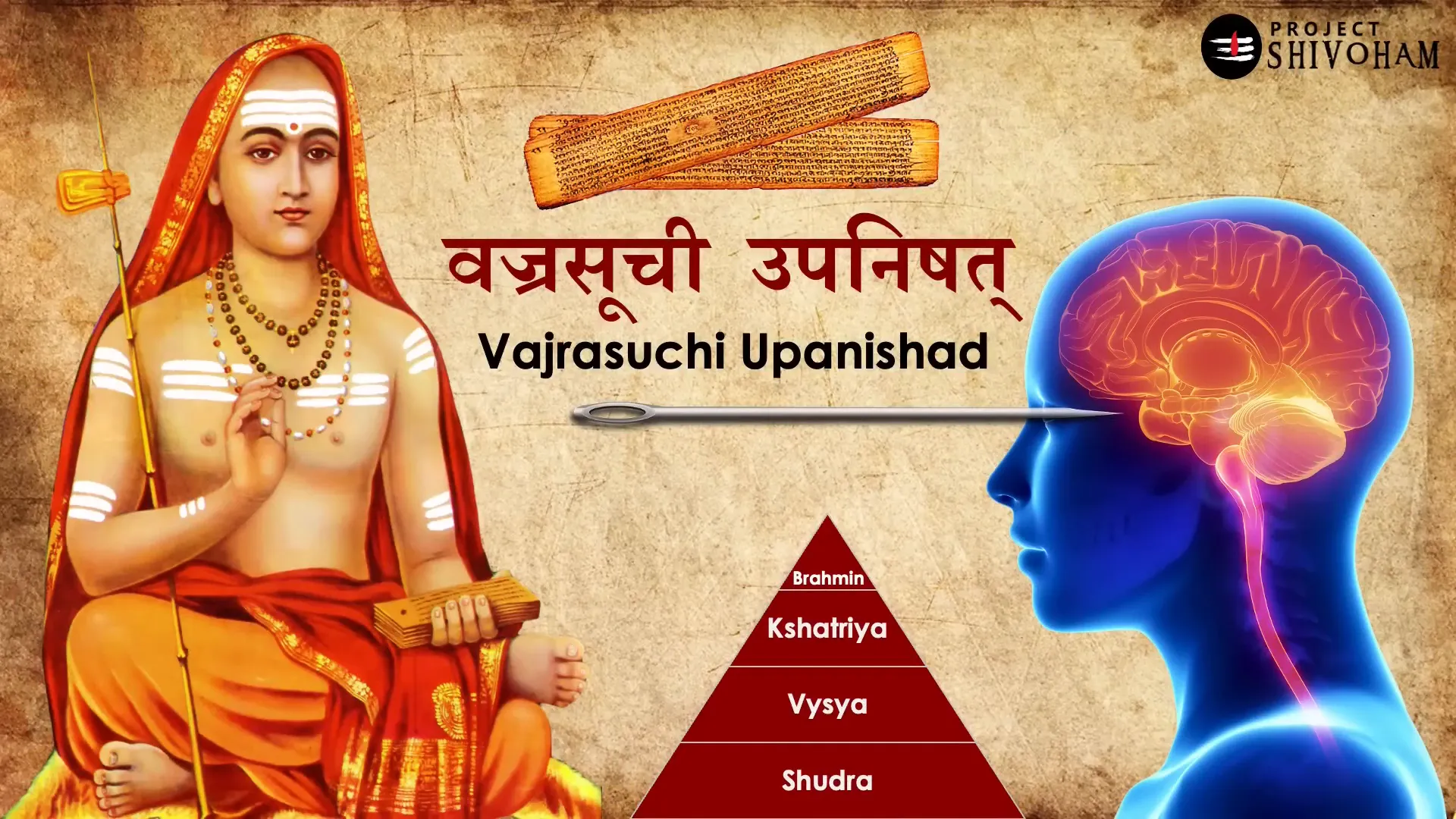
Defining Brahmin Beyond Birth
Adi Shankaracharya asserts that true Brahmanas are not determined by lineage but by their qualities and actions. This perspective aligns with the broader theme of recognizing individual merit over inherited status. The Upanishad encourages us to reflect on what truly constitutes a Brahmin, urging us to look beyond superficial classifications.
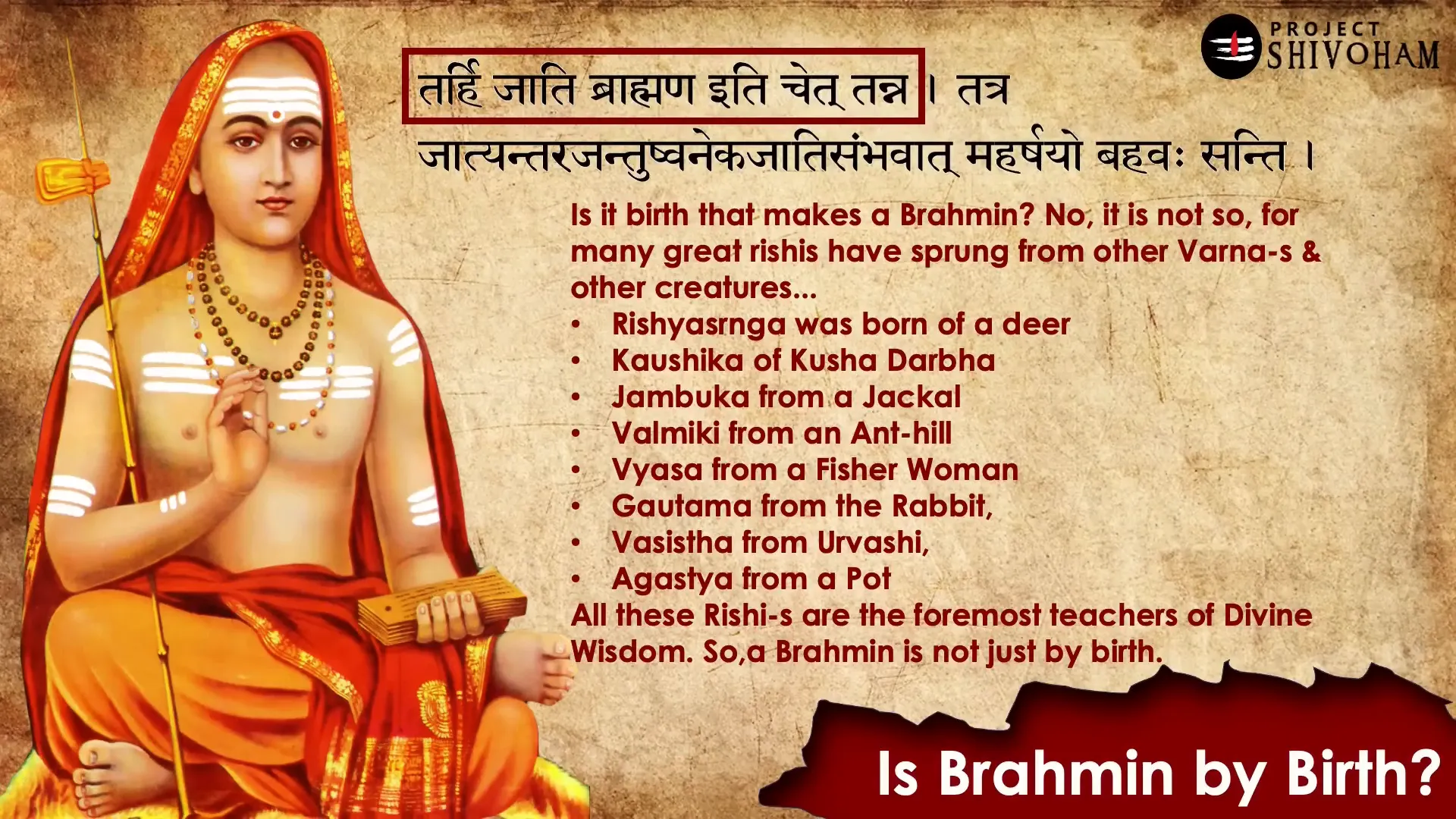
The Story of Satyakama Javali
In the Chandogya Upanishad, the story of Satyakama Javali exemplifies the Upanishadic philosophy of truth and virtue over caste. Satyakama, a young boy, approached Gautama Maharshi seeking knowledge, despite not knowing his father’s identity. This narrative challenges conventional views on caste and identity, illustrating that truth and sincerity are the true markers of worth.
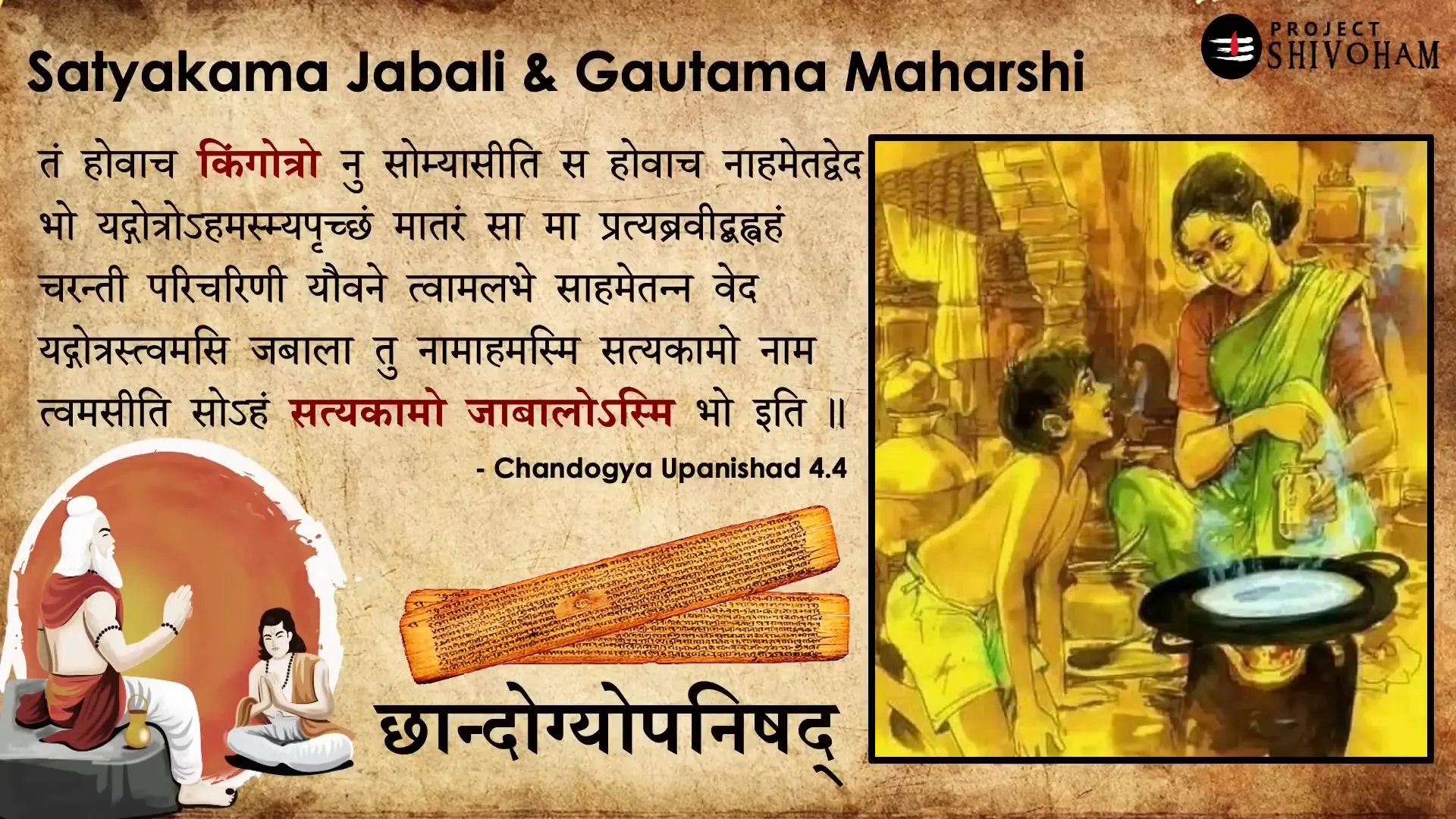
The Lesson of Acceptance
Gautama Maharshi’s recognition of Satyakama as a Brahmin, despite his uncertain lineage, underscores the importance of character over caste. This story serves as a powerful reminder that wisdom and integrity are what truly define an individual’s worth, encouraging society to embrace a more inclusive understanding of identity.
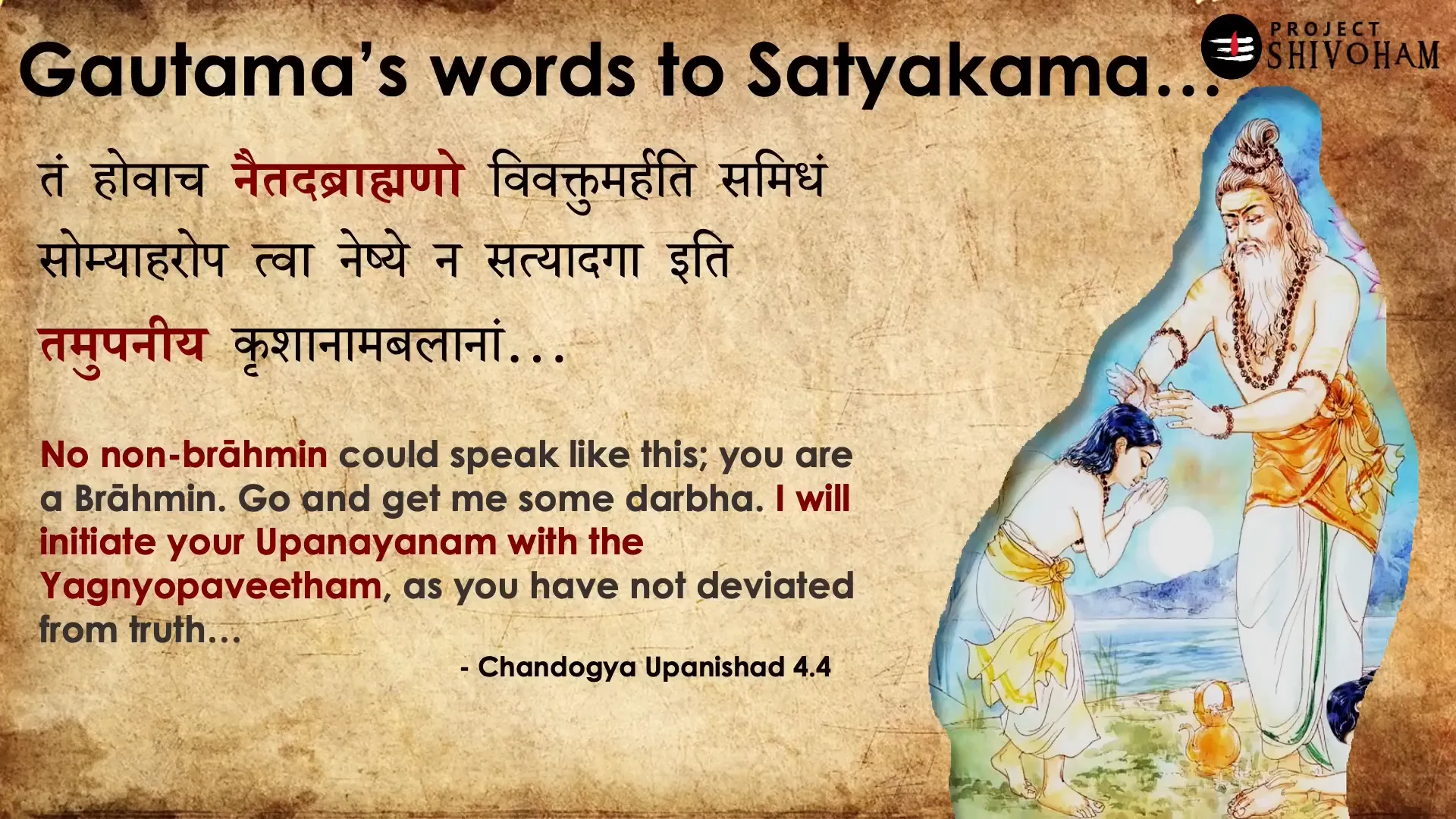
The Controversial Case of Ekalavya
The tale of Ekalavya is often recounted as a poignant example of caste discrimination in ancient Bharat. However, a deeper examination reveals nuances that challenge the conventional narrative. Ekalavya, the son of Hiranyadhanus, the king of tribals, approached Dronacharya with the earnest desire to learn archery. In many retellings, his rejection is attributed to his lower caste status, a perspective that oversimplifies the complexity of the situation.
In the Mahabharata, Ekalavya is referred to as “Maharaja,” a title reserved for kings. This choice of words alone raises questions about his social standing. How can one label Ekalavya as a low-caste individual when he is recognized as a king’s son? The narrative of Ekalavya is not merely about caste; it intertwines with themes of duty, loyalty, and the dynamics of mentorship. Dronacharya’s refusal to teach him was not a reflection of Ekalavya’s worth but rather a protective measure for his own students, particularly Arjuna, whom he had pledged to make the finest archer.
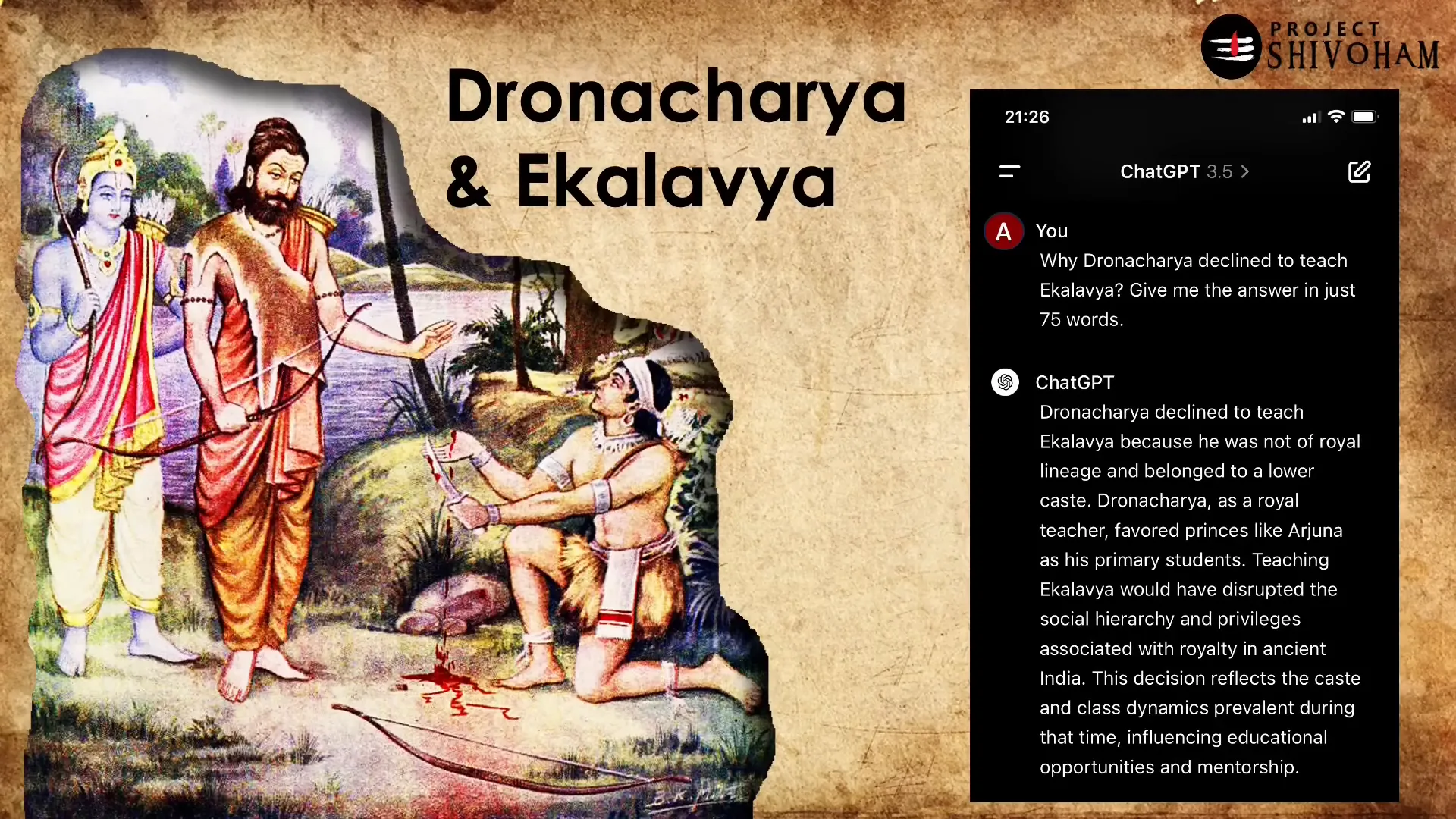
Understanding Dronacharya’s Decision
Dronacharya’s decision to decline Ekalavya was rooted in his obligations as a teacher. He had committed to nurturing the skills of the Kauravas and Pandavas, and Ekalavya’s potential to surpass them posed a threat to that promise. This context shifts the focus from caste discrimination to the complexities of mentorship and the responsibilities that come with it.
Furthermore, the portrayal of Ekalavya as a victim of caste discrimination lacks substantiation in the original texts. Rather than being a victim of societal structures, Ekalavya emerges as a figure of resilience and dedication. He created a clay idol of Dronacharya, embodying the essence of a devoted student, and practiced diligently in solitude. This act of devotion speaks volumes about his character, transcending the labels imposed by society.
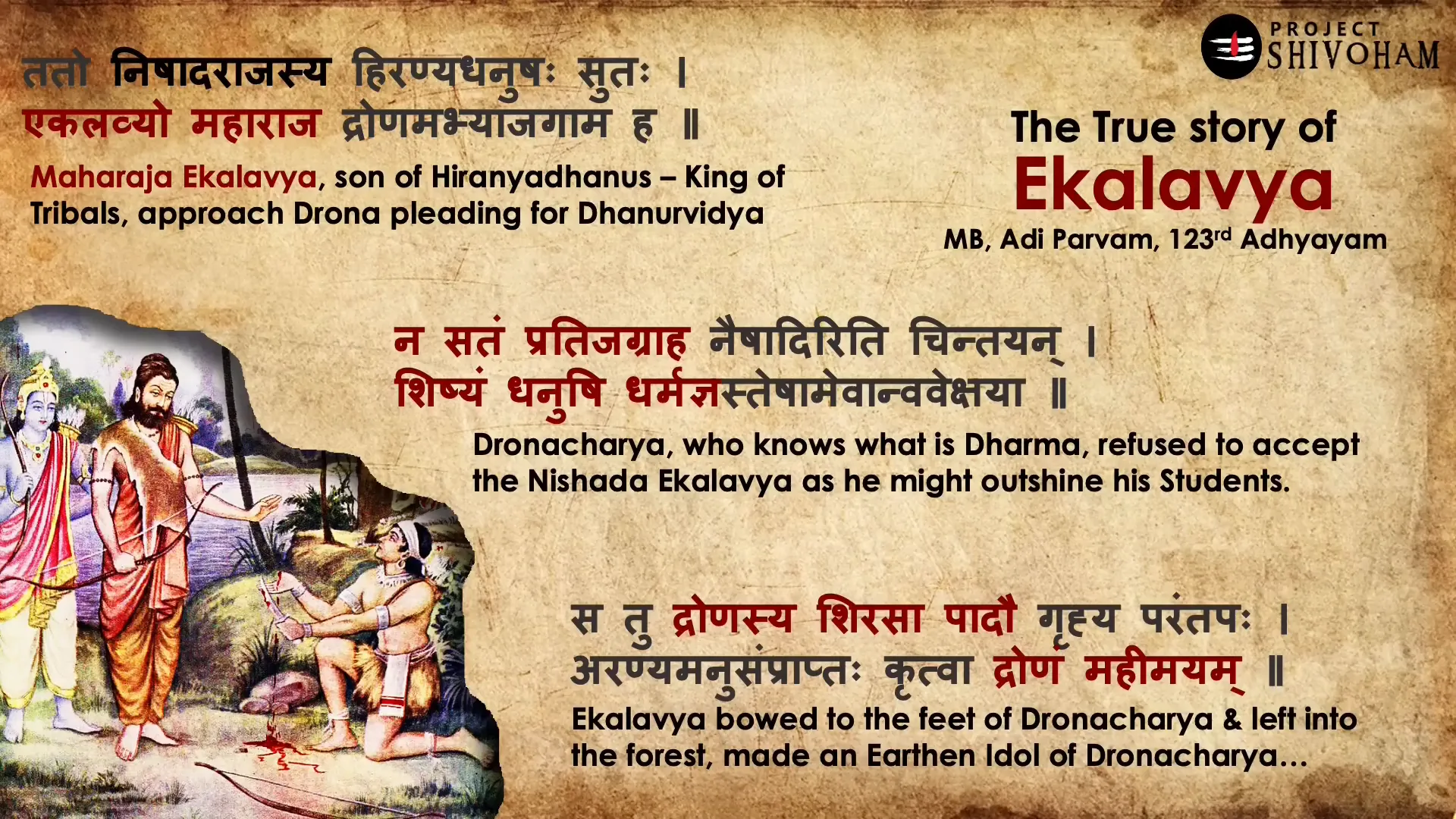
Introspection: Comparing Ekalavya and Satyakama’s Stories
When we juxtapose the narratives of Ekalavya and Satyakama, we unearth profound insights into the nature of identity and worth. Satyakama Javali, from the Chandogya Upanishad, approached Gautama Maharshi seeking knowledge without knowing his father’s identity. Unlike Ekalavya, Satyakama’s story emphasizes that lineage did not define his ability to become a Brahmana.
The contrast between these two stories is stark. Ekalavya, despite his royal lineage, is often misrepresented as a victim of caste discrimination, while Satyakama, who lacks knowledge of his parentage, is embraced for his sincerity and truthfulness. This divergence illustrates the fluidity of identity in ancient texts, suggesting that character and intent are far more significant than birth.
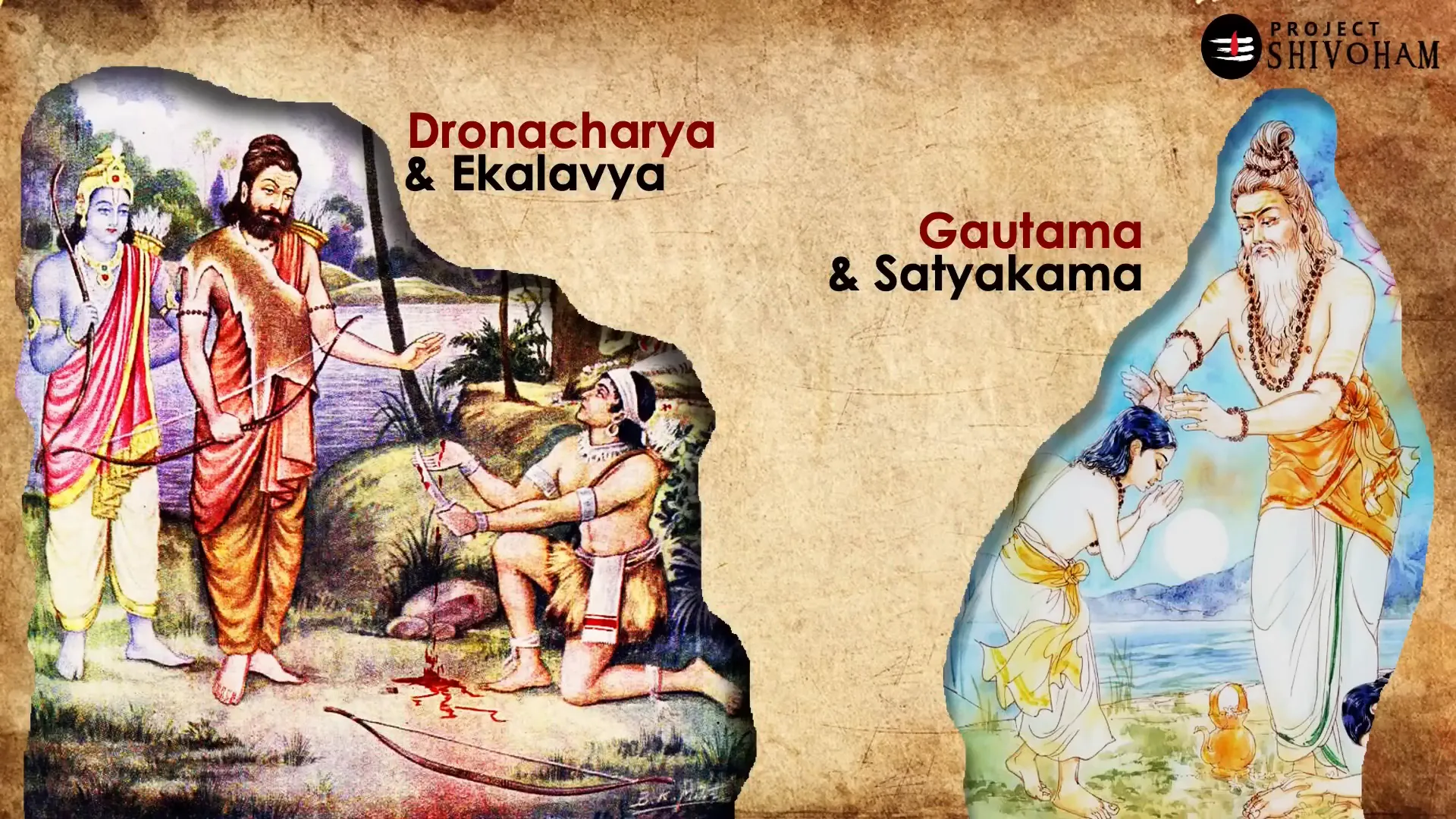
The Lessons We Can Draw
Both stories challenge us to reconsider preconceived notions about caste and identity. They invite introspection about what it means to truly belong to a community. Ekalavya exemplifies dedication, while Satyakama embodies truth. Their narratives remind us that the essence of a person’s worth lies not in their lineage but in their actions and character.
The Fluidity of the Chaturvarna System
The Chaturvarna system, traditionally perceived as rigid and unchanging, is depicted in ancient texts as a dynamic structure. Lord Shiva, in a conversation with Parvati, addresses the fluidity of varna, emphasizing that one’s caste is not a fixed attribute determined solely by birth. Instead, it is shaped by education, profession, and personal growth.
The notion that a Sudra can rise to become a Brahmana through knowledge and virtue underscores the potential for social mobility within this framework. The scriptures indicate that through dedication and learning, individuals can transcend their birth-related limitations. This perspective challenges the modern interpretation of caste as a static hierarchy.
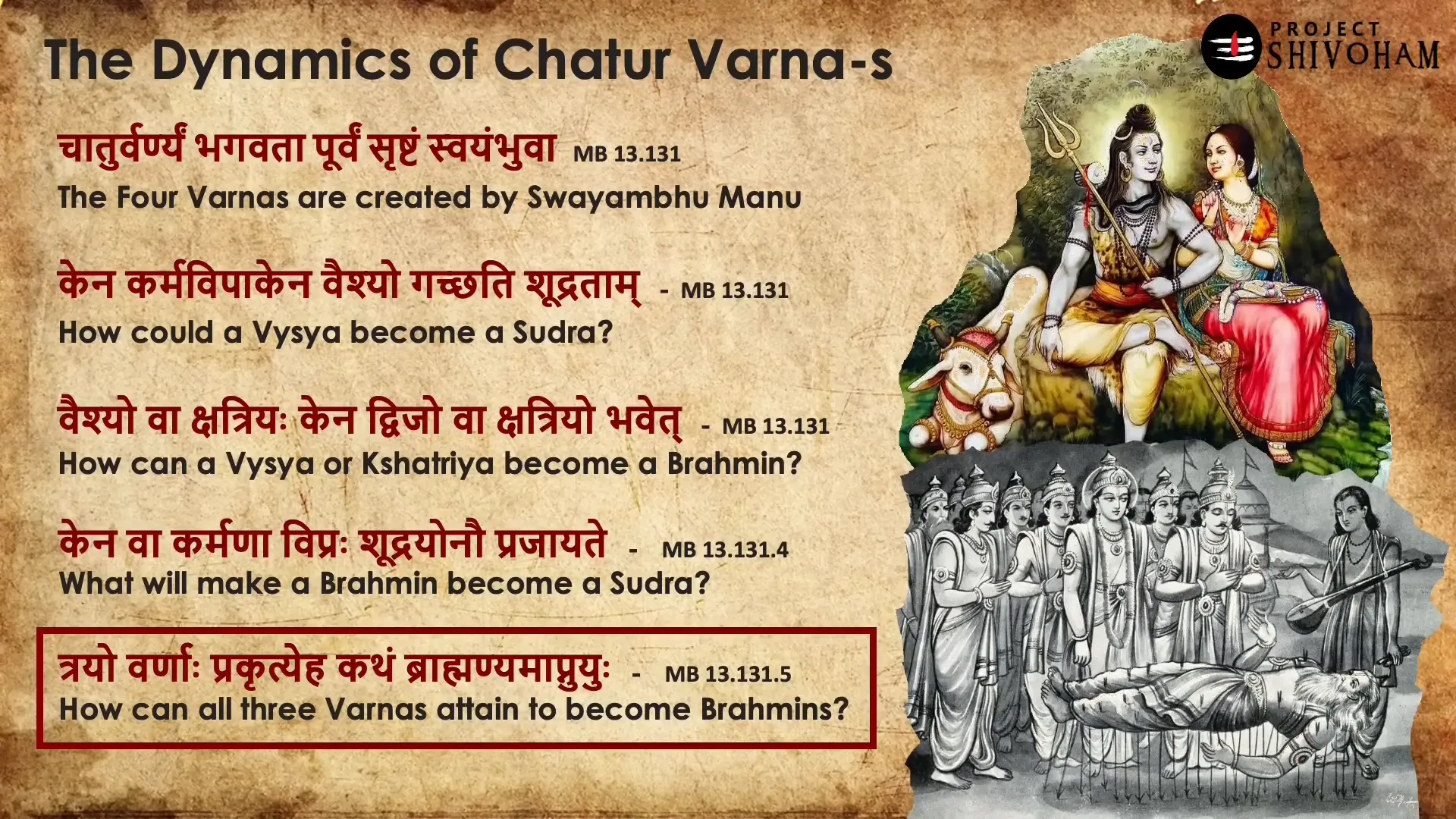
The Role of Knowledge and Education
Education plays a pivotal role in determining one’s varna. It is not merely about the scriptures but encompasses all forms of learning and skill acquisition. The ancient texts advocate for a system where individuals can evolve based on their capabilities and contributions to society. This fluidity allows for a reimagining of caste dynamics, promoting a more inclusive understanding of identity.
Conclusion: The Duality of Brahmin Identity
The exploration of Brahmin identity reveals a complex interplay of privilege and responsibility. While Brahmins have historically held positions of power, they have also faced discrimination and suffering. The narrative surrounding Brahmins is not monolithic; it encompasses stories of resilience, oppression, and the pursuit of knowledge.
As we navigate the contemporary discourse on caste, it is essential to recognize the duality of Brahmin identity. This complexity invites us to engage in meaningful dialogue, challenging stereotypes while acknowledging historical injustices. The journey towards understanding caste dynamics requires introspection and a commitment to truth.
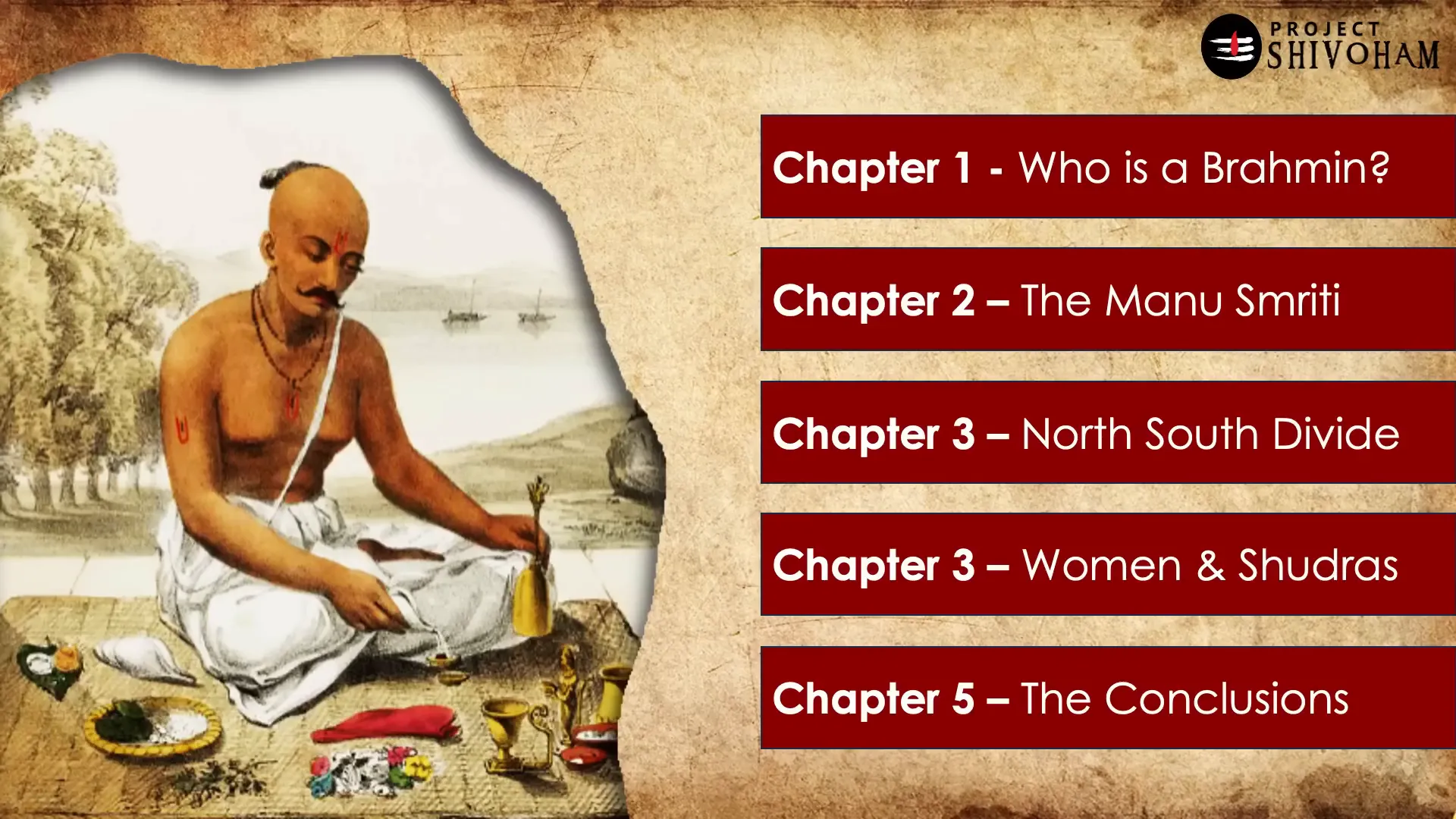
FAQ
1. Why is Ekalavya often considered a victim of caste discrimination?
Ekalavya’s story is frequently interpreted through a modern lens that emphasizes caste dynamics. However, a deeper analysis reveals that his rejection by Dronacharya was more about mentorship obligations than caste.
2. What is the significance of Satyakama’s story in relation to caste?
Satyakama’s narrative illustrates that lineage does not determine one’s capacity to achieve greatness. His acceptance by Gautama Maharshi highlights the importance of character over birth.
3. How does the Chaturvarna system allow for social mobility?
The Chaturvarna system, as depicted in ancient texts, is fluid and not strictly determined by birth. Education and personal development can enable individuals to transition between varnas.
4. What does it mean to be a Brahmin in contemporary society?
Being a Brahmin today entails recognizing the historical complexities associated with the identity, balancing privilege with an understanding of past injustices, and striving for equality and knowledge dissemination.
This article was created from the video Who is a Brahmin? with the help of AI. Thanks to Aravind Markandeya, Project Shivoham.